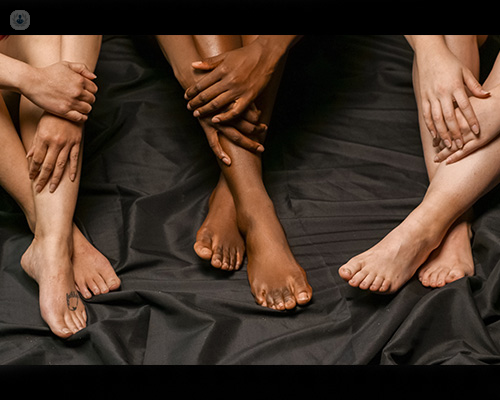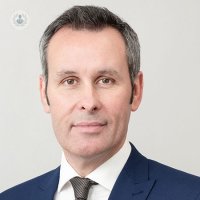Radiofrequency ablation of truncal varicose veins
Written by:Mr Donald Adam, a consultant vascular and endovascular surgeon with Premier Veins, explains radiofrequency ablation of truncal varicose veins and provides helpful additional information about this technology.

What is endothermal ablation and how is it done?
The National Institute for Health and Care Excellence (NICE) recommends endothermal ablation as the first line of treatment for truncal varicose veins. Endothermal ablation works by delivering heat to the inside of the vein which causes it to seal closed. There are two different ways of delivering heat to close the vein. One uses laser energy (endovenous laser ablation, EVLA) and the other uses radiofrequency energy (radiofrequency ablation or RFA).
What is RFA?
RFA is a walk-in-walk-out minimally-invasive procedure which is performed under local anaesthetic and usually takes less than one hour. Using Duplex ultrasound for precision guidance, a thin plastic tube is inserted into the vein being treated and a fine wire with the heating element at its tip is passed through the tube. The radiofrequency energy collapses the vein changing it from a tube to a string-like structure which the body absorbs by healing in the weeks and months after treatment. RFA leads to only a tiny amount of scarring, bruising, or swelling early after the procedure and is associated with a significant improvement in the appearance of trunk veins while relieving symptoms such as heaviness, pain, and skin irritation.
Scientific research has shown that the RFA procedure is generally less painful and may be more convenient than the laser treatment. The risk of complications from endothermal ablation is very low and can be reduced further by staying physically active after the treatment.
What are the other benefits of RFA?
While RFA is used mainly to treat larger straight truncal veins in the thigh, it can be combined with ultrasound-guided foam sclerotherapy (UGFS) to treat tortuous superficial varicose veins which are unsuitable for RFA, thereby avoiding the need for surgical removal. The foam sclerosant is made by mixing the sclerosing liquid with air and this is injected into the veins via very small plastic tubes which are placed accurately in the veins to be treated using Duplex ultrasound guidance. Once all the veins have been treated, the plastic tubes are removed. The foam sclerosant causes the veins to block up and your body will then heal and absorb the veins.
Can varicose veins be prevented or cured?
When RFA is combined with UGFS, the varicose veins normally disappear gradually over the weeks and months after treatment. No treatment for varicose veins can prevent recurrent or new veins forming and, in general, about 10 to 15 per cent of people will have another varicose vein treatment within five years. The risk of future varicose veins can be reduced by taking regular exercise, controlling your weight, and wearing light support stockings.
Minimally-invasive techniques have revolutionised the treatment of varicose veins. RFA combined with UGFS provides a safe and effective one-stop walk-in-walk-out solution with minimal discomfort and avoids the need for lasers and surgical incisions.
If you have varicose veins and would like to make a consultation to have them treated, you can go to Mr Donald Adam's Top Doctors profile and schedule a visit.


